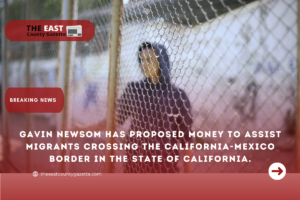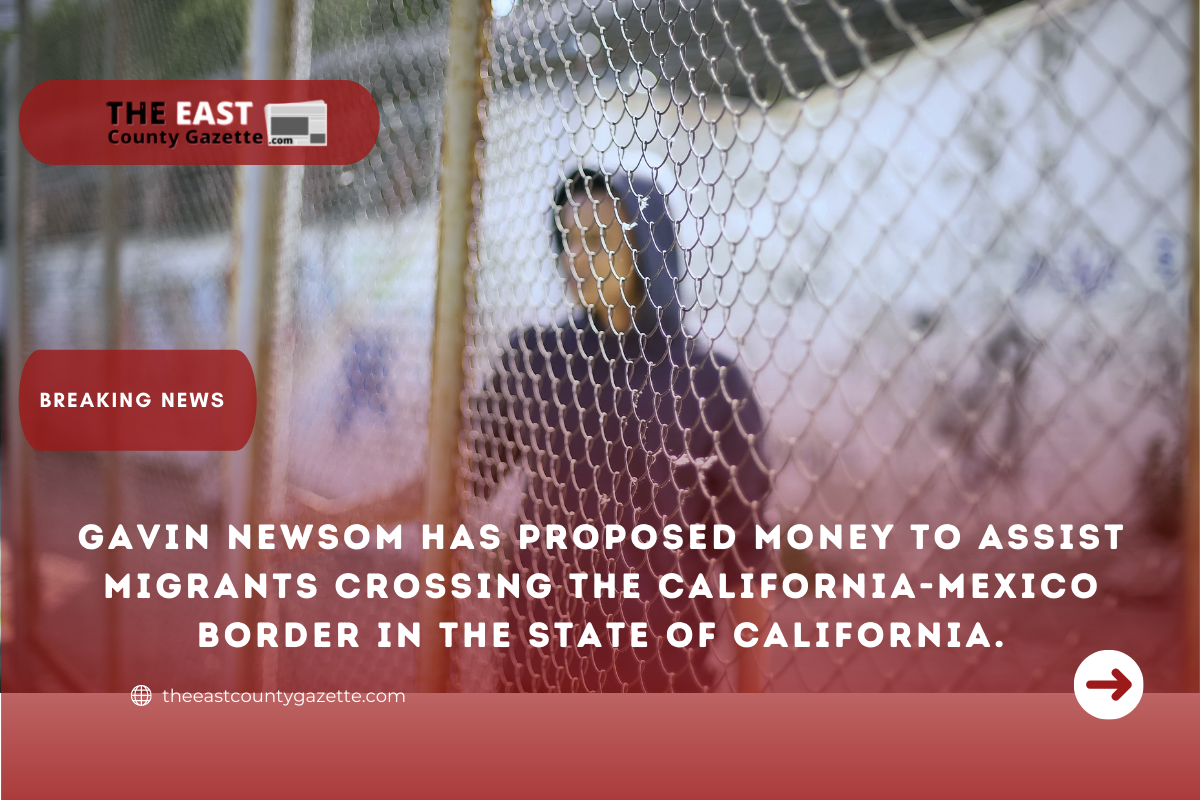Gavin Newsom has proposed money to assist migrants crossing the California-Mexico border in the state of California.
Communities along the California-Mexico border continue to feel the effects of two interconnected worldwide crises: the increasing influx and arrival of migrants seeking refuge, as well as the continuous spread of the highly infectious coronavirus, which has spread throughout the region.
Since before the pandemic, the state has set aside funds to provide humanitarian assistance to asylum seekers who have been freed from federal immigration detention since the outbreak began.

Gov. Gavin Newsom is now proposing to increase the amount of money that will be allocated to those efforts. In response to the COVID-19 epidemic, he has suggested investing an additional $110 million for vaccinations and testing of asylum seekers, as well as for isolation and quarantine measures, in addition to the existing allocation.
Funding for COVID-19 response efforts totaling $2.7 billion is included in the proposed fiscal year 2022-23 budget, which was announced by him in January. Some of the monies will also be utilized to boost contact tracing efforts across the state.
According to a statement from Daniel Lopez, the governor’s press secretary, “California’s operations and partnership with the federal government ensure that migrants released from federal immigration custody at the border receive COVID-19 testing and support services to ensure safe travel to their ultimate destination in the United States, where they will continue with their immigration proceedings.”
The governor stated that “through these efforts, California has established a state-run national model that safeguards the health and well-being of arriving migrants as well as our border communities.”
However, Andy Carey, executive director of the U.S.-Mexico Border Philanthropy Partnership, a binational organization that provides services to the migrant population, says that while state funding is important, it does not address the public health challenges that migrants face on the Mexican side of the border.
On February 7, Newsom’s office believes that funding for migrant shelters had supplied services to almost 96,000 migrants, according to the office’s calculations.
Many more migrants who were exercising their international right to seek asylum in the United States, according to some advocates, were denied admission into the country and sent back to Mexico, leaving them vulnerable to getting the virus and without access to crucial services.
According to Carey, “There is a lot of money that’s been put aside for services in the United States, but the problem continues to be mostly located on the other side of the border.”
“And Mexico is still in a very precarious position with COVID-19 since there has been a significant delay in providing people with access to the vaccination,” says the expert.
MIGRANTS AT THE CALIFORNIA BORDER DO NOT HAVE ACCESS TO HEALTH SERVICES
Three shelters operated by local government agencies and nonprofit community organizations will receive state funding to provide primary critical services, which will include medical screenings and prescriptions as well as temporary sheltering, meals, case management, and transportation for onward travel, among other resources, to those who come to them.
One is located in Imperial County, and the other two are located in San Diego County.
However, Andy Carey, executive director of the U.S.-Mexico Border Philanthropy Partnership, a binational organization that provides services to the migrant population, says that while state funding is important, it does not address the public health challenges that migrants face on the Mexican side of the border.
On February 7, Newsom’s office believes that funding for migrant shelters had supplied services to almost 96,000 migrants, according to the office’s calculations.
Many more migrants who were exercising their international right to seek asylum in the United States, according to some advocates, were denied admission into the country and sent back to Mexico, leaving them vulnerable to getting the virus and without access to crucial services.
According to Carey, “There is a lot of money that’s been put aside for services in the United States, but the problem continues to be mostly located on the other side of the border.”
“And Mexico is still in a very precarious position with COVID-19 since there has been a significant delay in providing people with access to the vaccination,” says the expert.
MIGRANTS AT THE CALIFORNIA BORDER FACES CHALLENGES
Three shelters operated by local government agencies and nonprofit community organizations will receive state funding to provide primary critical services, which will include medical screenings and prescriptions as well as temporary sheltering, meals, case management, and transportation for onward travel, among other resources, to those who come to them.
One is located in Imperial County, and the other two are located in San Diego County.

